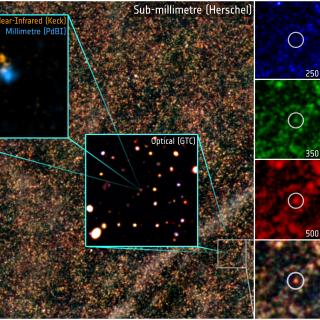Bibcode
Referencia bibliográfica
The Astrophysical Journal
Fecha de publicación:
11
2022
Revista
Número de citas
47
Número de citas referidas
35
Descripción
A large fraction of Type Ia supernova (SN Ia) observations over the next decade will be in the near-infrared (NIR), at wavelengths beyond the reach of the current standard light-curve model for SN Ia cosmology, SALT3 (~2800-8700 Å central filter wavelength). To harness this new SN Ia sample and reduce future light-curve standardization systematic uncertainties, we train SALT3 at NIR wavelengths (SALT3-NIR) up to 2 μm with the open-source model-training software SALTshaker, which can easily accommodate future observations. Using simulated data, we show that the training process constrains the NIR model to ~2%-3% across the phase range (-20 to 50 days). We find that Hubble residual (HR) scatter is smaller using the NIR alone or optical+NIR compared to optical alone, by up to ~30% depending on filter choice (95% confidence). There is significant correlation between NIR light-curve stretch measurements and luminosity, with stretch and color corrections often improving HR scatter by up to ~20%. For SN Ia observations expected from the Roman Space Telescope, SALT3-NIR increases the amount of usable data in the SALT framework by ~20% at redshift z ≲ 0.4 and by ~50% at z ≲ 0.15. The SALT3-NIR model is part of the open-source SNCosmo and SNANA SN Ia cosmology packages.
Proyectos relacionados

Formación y Evolución de Galaxias: Observaciones Infrarrojas y en otras Longitudes de Onda
Este grupo desarrolla varios proyectos extragalácticos en diferentes rangos del espectro electromagnético utilizando satélites y telescopios en tierra para estudiar la evolución cosmológica de las galaxias y el origen de la actividad nuclear en galaxias activas. En el aspecto instrumental, el grupo forma parte del consorcio internacional que ha
Ismael
Pérez Fournon